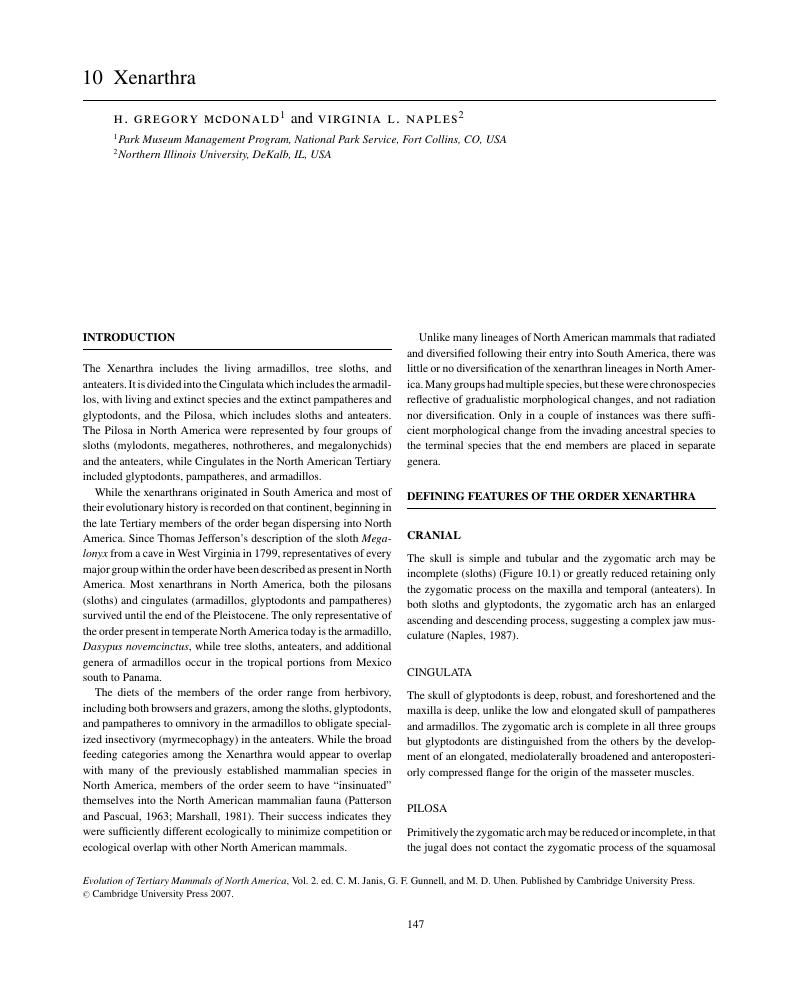10 - Xenarthra
from Part III - “Edentata”
Published online by Cambridge University Press: 07 September 2010
Summary

- Type
- Chapter
- Information
- Evolution of Tertiary Mammals of North America , pp. 147 - 160Publisher: Cambridge University PressPrint publication year: 2008
References
- 8
- Cited by



